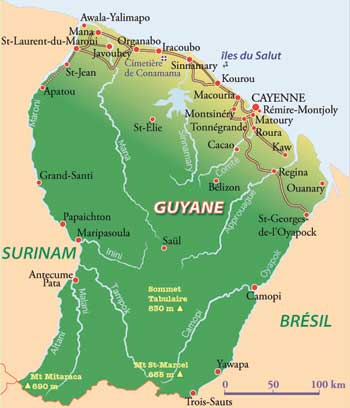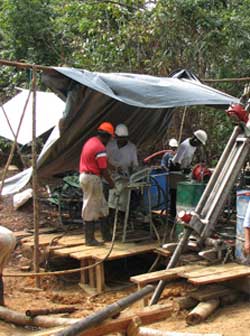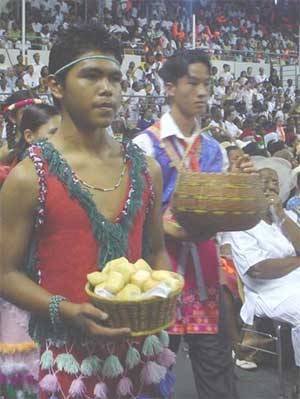 |
|
| Log-book |
|
| |
|
 |
I was invited by the bishop of Cayenne and for the first time I went to Guyana, which is located 7,000 Km from France. It was Christmas Eve in the rainy season. Guyana is a large department of 91,000 Km2 with a population of just about of 200,000. It is a tropical climate and very humid. The humidity rate is close to 90%. |
|
|
| |
|
| The first thing that struck me was the equatorial forest, huge and fragile. |
|
|
|
| |
|
We took a small plane, the only way to go to the village of Saül. I staid there three days, deep in the Amazon forest, with the bishop of Cayenne who was not afraid to forge ahead to the more isolated villages. As we got off the plane, a young farmer took us on his tractor. We followed a very irregular trail and we arrived in a remote farm in the forest. I was bitten by lots of mosquitoes but none survived!
After spending the night in a hammock, the farmer, his wife and his two children took us in the dense and humid forest. It was another world, that of biodiversity. Everything is magic so very interesting. |
|
| |
|
 |
Illegal workers, Brazilians in majority, come to dig gold from the riverbeds. Mercury with toxic effects is widely used. The water is dirty. Deforestation is necessary. The disastrous effects on environment as well as on the health are regularly denounced but with no apparent results. |
|
|
| |
|
| The population is living inshore. And among it, many young people very talented and full of life. I am impressed by this youth, which is a considerable asset for the future of the country. But drugs and unemployment are the two scourges of this group. This population appeared to me as a medley of communities with not much connection between them: the Creoles are a majority in Guyana, former slaves that came from Africa. The Amerindians, historically who have been, the first inhabitants of Guyana, are not in great number. |
|
| |
|
| The Asians, mostly Chinese, who own almost all the groceries, the Hmongs, refugees from Laos, who arrived in Guyana in 1970, the Brazilians, the Haitians, the Dominicans, the Surinamese…not to mention the French, mostly in Kourou, the launching base for the Ariane rockets. After the biodiversity of the forest, there is this diversity of the languages, the cultures and the traditions. |
|
|
|
| |
|
 |
I celebrated the Christmas midnight mass in a chapel of an Amerindian village. On my arrival they were all there: standing in a dignified manner, reserved, wearing their Sunday best with their fine children. In a Hmong village I went to the New Year celebration. A great number of young people was there. I admired the dances and the music unknown to me. |
|
|
| |
|
| The meeting of the local Bishops was held in Paramaribo, the capital of Suriname. It was an opportunity for me to discover this poor country and to go to meet this lovable people with young and energetic priests. Some are native of Guyana. Most of them have come from Nigeria, Cameroon and Haiti. I received from them a very brotherly welcome. |
|
| |
|
|

